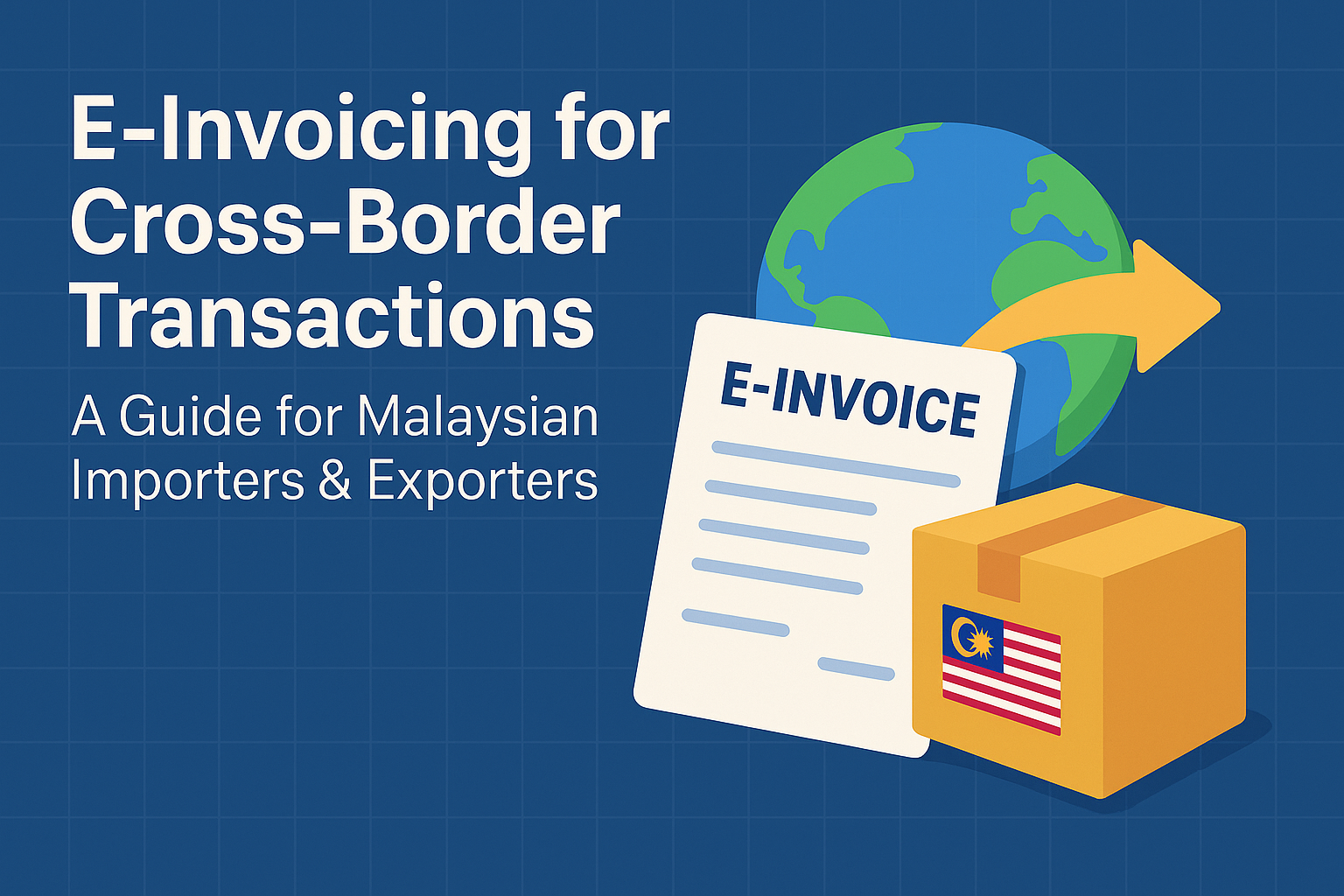With the nationwide implementation of e-invoicing, a critical question for many Malaysian businesses is: “How do I handle transactions with my international suppliers and customers?” The standard e-invoicing process applies between two Malaysian entities, but the rules are different for cross-border trade.
The Inland Revenue Board of Malaysia (LHDN) has released specific guidelines to clarify these procedures. Understanding your obligations as both an importer and an exporter is essential for ensuring full compliance. This guide breaks down exactly what you need to do.
1. For Importers: When Your Business Buys from a Foreign Supplier
When your Malaysian company purchases goods or services from a supplier based outside of Malaysia, the foreign supplier is not required to issue a Malaysian e-invoice.
So, how do you claim this as a valid business expense for your own tax purposes?
- The Rule: The Malaysian buyer is required to issue a Self-Billed E-Invoice.
- Why? You, the buyer, must create this e-invoice on behalf of your foreign supplier to create an official, validated record of the expense in the LHDN MyInvois system. Without this self-billed e-invoice, you may not be able to claim the expense as a tax deduction.
- Important Note on Imported Services: If you are importing taxable services, your company may be required to account for and pay the 8% Service Tax to the Royal Malaysian Customs Department (RMCD). When creating the self-billed e-invoice, you must include this imported service tax amount.
2. For Exporters: When Your Business Sells to a Foreign Buyer
When your Malaysian company sells goods or provides services to a customer outside of Malaysia, the rules are more straightforward.
- The Rule: The Malaysian supplier is required to issue a standard e-invoice to the foreign buyer.
- Why? This is to properly record your export income in the LHDN system, just as you would for a domestic sale.
- Practical Steps: You will need to obtain the necessary details from your foreign buyer to issue the e-invoice. If the foreign buyer does not have a Malaysian Tax Identification Number (TIN), LHDN provides specific “general TINs” that can be used for this purpose. The validated e-invoice is then sent to your foreign customer as their official invoice.
Summary: Who Issues the E-Invoice?
Navigating Global Trade in the E-Invoice Era
Managing cross-border transactions involves complexities in foreign exchange, logistics, and now, e-invoicing. Ensuring every import and export is correctly documented according to LHDN’s new digital standards is crucial for both tax compliance and smooth operations.
At SMONE, our Cloud Accounting & Tax Compliance services are equipped to handle these modern requirements. We can help you set up the correct procedures for:
- Issuing self-billed e-invoices for your imports to secure your tax deductions.
- Issuing standard e-invoices for your exports to correctly report your income.
Contact us today to ensure your cross-border business activities are fully compliant with the latest regulations.
(Disclaimer)
This article is for general informational purposes. It does not constitute legal or tax advice. Please refer to the latest official guidelines from LHDN for complete information on e-invoicing.


